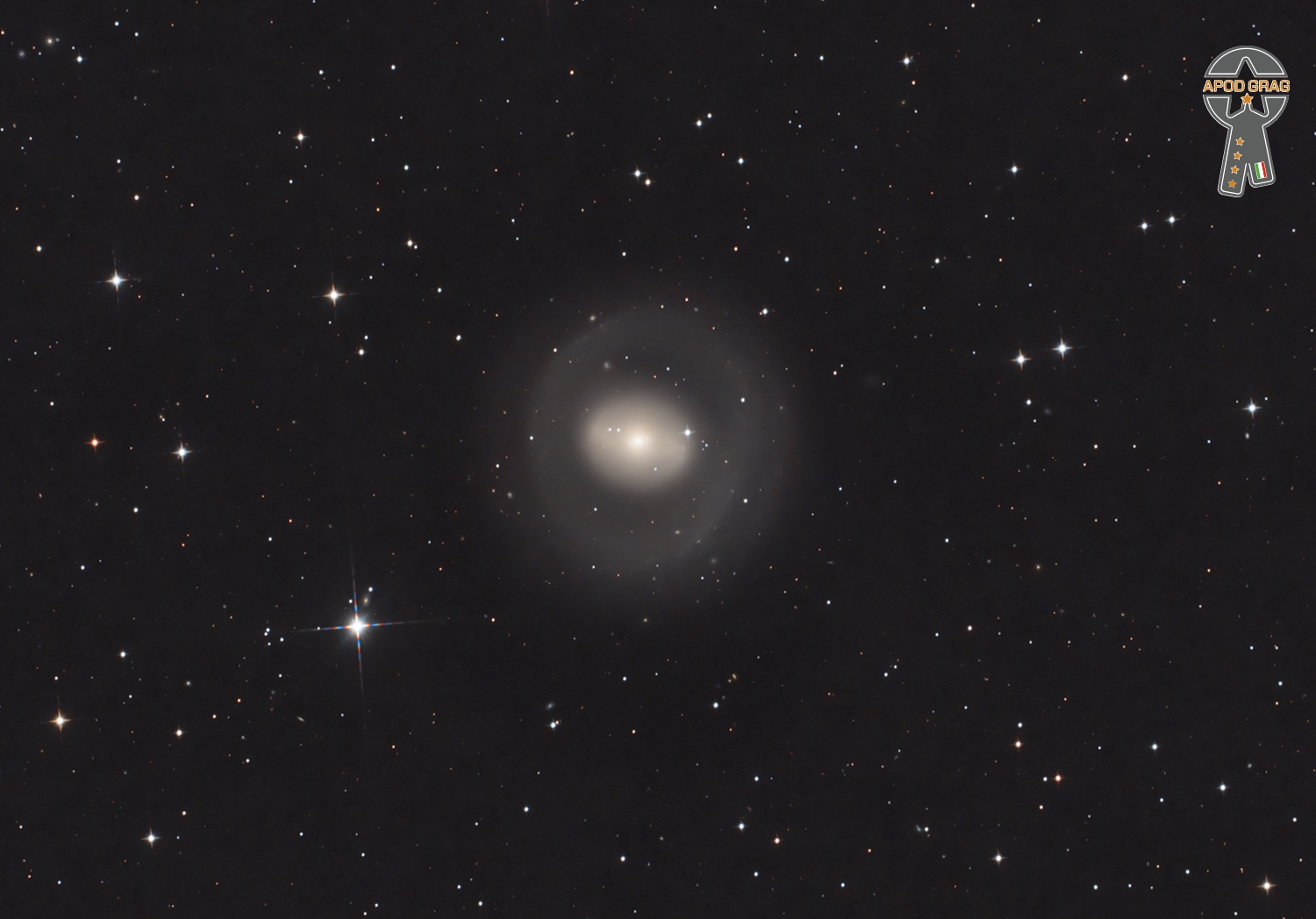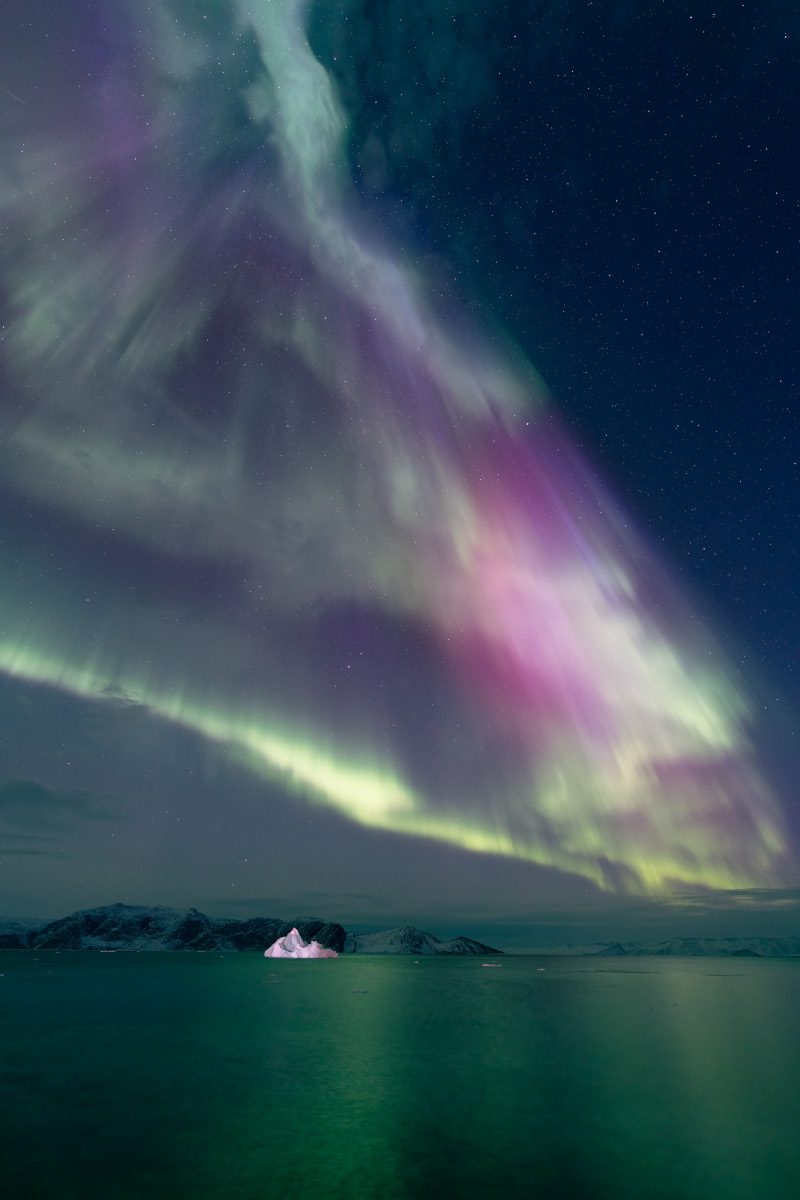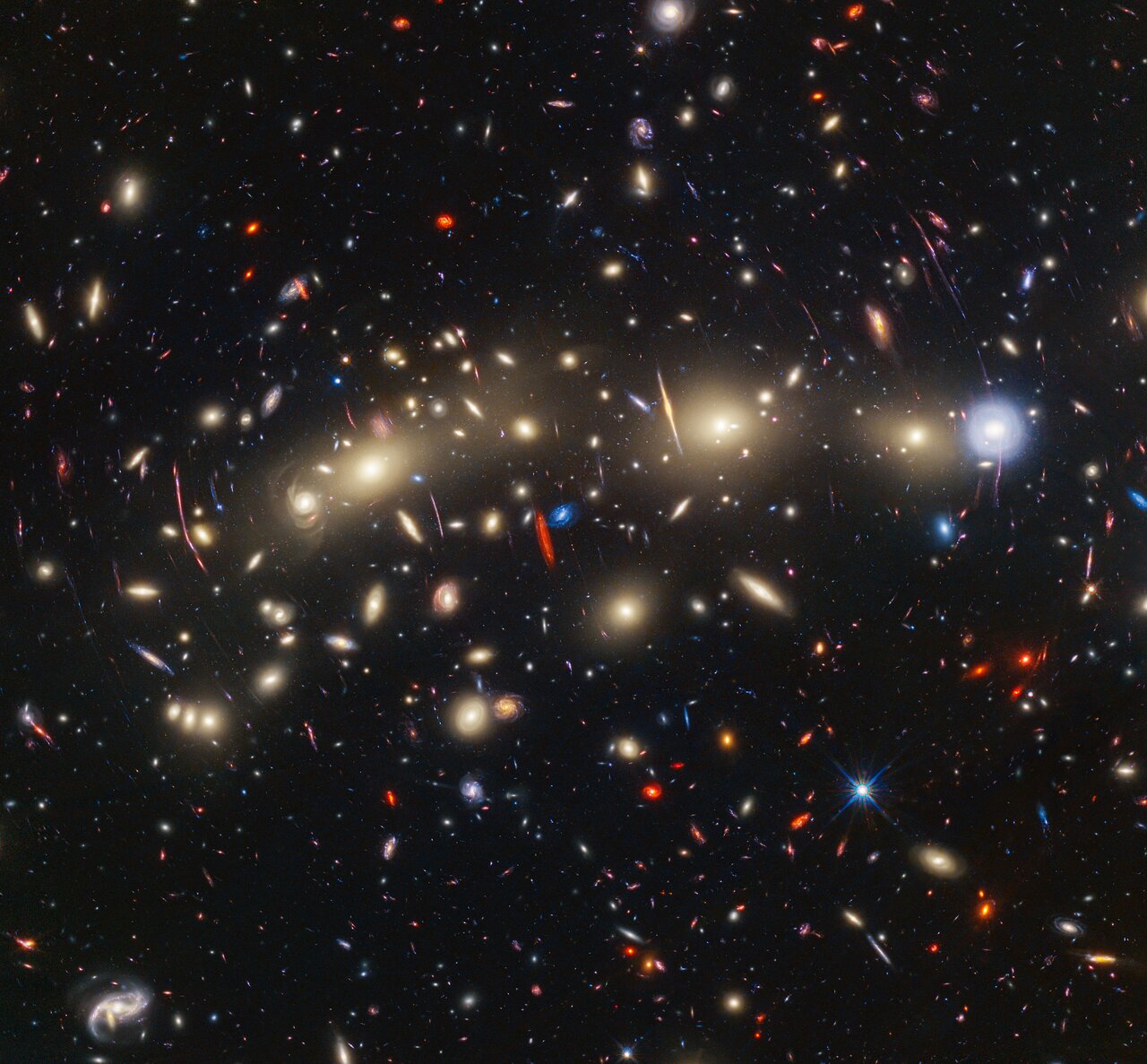Blog
NGC 1291, also known as NGC 1269, is a ring galaxy with an unusual inner bar and outer ring structure located about 33 million light-years away in the constellation Eridanus. It was discovered by James Dunlop in 1826 and subsequently entered into the New General Catalogue as NGC 1291 by Johan Ludvig Emil Dreyer. John Herschel then observed the same object in 1836 and entered it into the catalog as NGC 1269 without realizing that it was a duplicate. This galaxy was cited as an example of a “transitional galaxy” by NASA‘s Galaxy Evolution Explorer team in 2007.
NGC 1291 faces towards the Solar System nearly face-on. It has a prominent bulge, and is forming stars in its disk, albeit slowly, being a lenticular galaxy. Like other early-type galaxies, NGC 1291 has a population of old globular clusters. About 65% of them belong to the “blue” population that is more metal-poor, while the rest are “red” and more metal-rich.

Ingram Cecil Connor III (November 5, 1946 – September 19, 1973) Winter Haven, FL who was known professionally as Gram Parsons, was an American singer, songwriter, guitarist, and pianist. He recorded as a solo artist and with the International Submarine Band, the Byrds, and the Flying Burrito Brothers, popularizing what he called “Cosmic American Music”, a hybrid of country, rhythm and blues, soul, folk, and rock.
Parsons was born in Winter Haven, Florida, and developed an interest in country music while attending Harvard University. He founded the International Submarine Band in 1966, but the group disbanded prior to the 1968 release of its debut album, Safe at Home. Parsons joined the Byrds in early 1968 and played a pivotal role in the making of the Sweetheart of the Rodeo album, a pioneering country rock album and a seminal progressive country recording. After leaving the group in late 1968, Parsons and fellow Byrd Chris Hillman formed The Flying Burrito Brothers in 1969; the band released its debut, The Gilded Palace of Sin, the same year. The album was well received but failed commercially. After a sloppy cross-country tour, the band hastily recorded Burrito Deluxe. Parsons was fired from the band before the album’s release in early 1970. Parsons spent the first half of 1971 with Keith Richards of the Rolling Stones, living in his French villa Nellcôte during the recording sessions for Exile on Main Street, though he contributed very little to the recording process itself. After traveling around Britain with friends in late 1971, he was treated for heroinaddiction and returned to the U.S., where he was introduced to Emmylou Harris, who assisted him on vocals for his first solo record, GP, released in 1973. Although it received enthusiastic reviews, the release failed to chart. His health deteriorated due to several years of drug abuse culminating in his death from a toxic combination of morphine and alcohol in 1973 at the age of 26. A posthumous solo album, Grievous Angel, peaked at number 195 on the Billboard chart.
Parsons’s relatively short career was described by AllMusic as “enormously influential” for country and rock, “blending the two genres to the point that they became indistinguishable from each other.” He has been credited with helping to found the country rock and alt-country genres. His posthumous honors include the Americana Music Association “President’s Award” for 2003 and a ranking at No. 87 on Rolling Stone‘s list of the “100 Greatest Artists of All Time.
In the late 1960s, Parsons became enamored of and began to vacation at Joshua Tree National Park (then a National Monument) in southeastern California, where he frequently used psychedelics and reportedly experienced several UFO sightings. After splitting from Burrell, Parsons often spent his weekends in the area with Margaret Fisher and Phil Kaufman, with whom he had been living. Scheduled to resume touring in October 1973, Parsons decided to go on another recuperative excursion on September 17. Accompanying him were Fisher, personal assistant Michael Martin, and Martin’s girlfriend Dale McElroy. Kaufman later said that Parsons’ attorney was preparing divorce papers to serve to Burrell while Parsons remained in Joshua Tree on September 20.
During the trip, Parsons often retreated to the desert, while the group visited bars in the nearby hamlet of Yucca Valley on both nights of their stay. Parsons consumed large amounts of alcohol and barbiturates. On September 18, Martin drove back to Los Angeles to resupply the group with marijuana. That night, after challenging Fisher and McElroy to drink with him (Fisher disliked alcohol and McElroy was recovering from a bout of hepatitis), he said, “I’ll drink for the three of us,” and proceeded to drink six double tequilas. They then returned to the Joshua Tree Inn, where Parsons purchased morphine from an unknown young woman. After being injected by her in room #1, he overdosed. Fisher gave Parsons an ice-cube suppository, and later, a cold shower. Instead of moving Parsons around the room, she put him to bed in room #8 and went out to buy coffee in the hope of reviving him, leaving McElroy to stand guard. As his respirations became irregular and later ceased, McElroy attempted resuscitation. Her efforts failed and Fisher, watching from outside, was visibly alarmed. After further failed attempts, they decided to call an ambulance. Parsons was declared dead on arrival at Yucca Valley Hospital at 12:15 a.m. on September 19, 1973, in Yucca Valley. The official cause of death was an overdose of morphine and alcohol.
According to Fisher in the 2005 biography Grievous Angel: An Intimate Biography of Gram Parsons, the amount of morphine consumed by Parsons would be lethal to three regular users. Keith Richards stated in the 2004 documentary film Fallen Angel that Parsons understood the danger of combining opiates and alcohol and should have been more cautious. Upon Parsons’ death, Fisher and McElroy were returned to Los Angeles by Kaufman, who dispersed the remnants of Parsons’ drugs in the desert.
Before his death, Parsons said he wanted his body cremated at Joshua Tree and his ashes spread over Cap Rock, a prominent natural feature there. However, Parsons’ stepfather Bob organized a private ceremony back in New Orleans and neglected to invite any of his friends from the music industry.Two accounts state that Bob Parsons stood to inherit Gram’s share of his grandfather’s estate if he could prove that Gram was a resident of Louisiana, explaining his eagerness to have him buried there. To fulfill Parsons’ funeral wishes, Kaufman and a friend stole his body from Los Angeles International Airport and in a borrowed hearse, they drove it to Joshua Tree. Upon reaching the Cap Rock section of the park, they attempted to cremate Parsons’ body by pouring five gallons of gasoline into the open coffin and throwing a lit match inside; what resulted was an enormous fireball.
The two were arrested several days later. Since there was no law against stealing a dead body, they were only fined $750 for stealing the coffin and were not prosecuted for leaving 35 pounds (16 kg) of his charred remains in the desert. What remained of Parsons’ body was eventually buried in Garden of Memories Cemetery in Metairie, Louisiana.
more...Cindy Blackman Santana (born November 18, 1959), sometimes known as Cindy Blackman, is an American jazz and rock drummer. Blackman has recorded several jazz albums as a bandleader and has performed with Pharoah Sanders, Sonny Simmons, Ron Carter, Sam Rivers, Cassandra Wilson, Angela Bofill, Buckethead, Bill Laswell, Lenny Kravitz, Joe Henderson and Joss Stone.
Born November 18, 1959, in Yellow Springs, Ohio, her mother and grandmother were classical musicians and her uncle a vibist. When Cindy was a child, her mother took her to classical concerts.
more...Donald Eugene Cherry (November 18, 1936 – October 19, 1995) was an American jazz trumpeter. Beginning in the late 1950s, he had a long tenure performing in the bands of saxophonist Ornette Coleman, including on the pioneering free jazz albums The Shape of Jazz to Come (1959) and Free Jazz: A Collective Improvisation (1960). Cherry also collaborated separately with musicians such as John Coltrane, Charlie Haden, Sun Ra, Ed Blackwell, the New York Contemporary Five, and Albert Ayler.
Cherry released his debut album as bandleader, Complete Communion, in 1966. In the 1970s, he became a pioneer in world fusion music, drawing on traditional African, Middle Eastern, and Hindustani music. He was a member of the ECM group Codona, along with percussionist Naná Vasconcelos and sitar and tabla player Collin Walcott. AllMusic called Cherry “one of the most influential jazz musicians of the late 20th century.” Cherry was born in Oklahoma City, Oklahoma, to a mother of Choctaw descent and an African-Americanfather.
Cherry died on October 19, 1995, at the age of 58 from liver cancer in Málaga, Spain. Cherry was inducted into the Oklahoma Jazz Hall of Fame in 2011.
more...Máximo Francisco Repilado Muñoz Telles (18 November 1907 – 13 July 2003), known professionally as “Compay Segundo“, was a Cuban trova guitarist, singer and composer. Compay (meaning compadre) Segundo, so called because he was always second voice in his musical partnerships, was born in Siboney, Cuba, and moved to Santiago de Cuba at the age of nine. His first engagement was in the Municipal Band of Santiago de Cuba, directed by his teacher, Enrique Bueno. In 1934, after a spell in a quintet, he moved to Havana, where he also played the clarinet in the Municipal Band. He also learned to play the guitar and the tres, which became his usual instruments. Compay Segundo also invented the armónico, a seven-stringed guitar-like instrument, to fill the harmonic jump between the Spanish guitar and the tres. In the 1950s he became well known as the second voice and tres player in Los Compadres, a duo he formed with Lorenzo Hierrezuelo in 1947.
more...Performing Friday November 17th 2023 630pm with Tami Morse and Rachel Stock Spilker.
more...Light pollution is usually not a problem in Qeqertaq. In western Greenland the remote coastal village boasted a population of 114 in 2020. Lights still shine in its dark skies though. During planet Earth’s recent <href=”https: spaceweather.com=”” archive.php?view=”1&day=06&month=11&year=2023″”>intense geomagnetic storm, on November 6 these beautiful curtains of aurora borealis fell over the arctic realm. On the eve of the coming weeks of polar night at 70 degrees north latitude, the inspiring display of northern lights is reflected in the waters of Disko Bay. In this view from the isolated settlement a lone iceberg is illuminated by shore lights as it drifts across the icy sea.

Imrat Khan (17 November 1935 – 22 November 2018) was an Indian sitar and surbahar player and composer. He was the younger brother of sitar maestro Ustad Vilayat Khan.
Imrat Khan was born in Calcutta on 17 November 1935 into a family of musicians tracing its roots back for several generations, to the court musicians of the Mughal rulers. The training in music traditionally has been passed down from father to son for nearly 400 years. He belonged to Etawah gharana also known as Imdadkhani gharana of classical musicians. Imrat Khan’s father was Enayat Khan (1895–1938), recognised as a leading sitar and surbahar player of his time, as had been his grandfather, Imdad Khan (1848–1920), before him. Imrat Khan’s father died when Imrat was a child, so he was raised by his mother, Bashiran Begum and her father, singer Bande Hassan Khan. In 1944, the family moved with Vilayat Khan, Imrat’s older brother, to Bombay where both the brothers learned sitar-playing extensively from their uncle Wahid Khan. In 1952, Vilayat and Imrat moved in together in Calcutta. They performed together for many years. The two brothers were part of the first cultural delegation to the Soviet Union and Eastern Europe in 1956.
more...November 17th 1946 Duralde, LA
The son of Creole accordion legend Alphonse “Bois Sec” Ardoin, Lawrence “Black” Ardoin not only carried on the family’s musical traditions, but he later passed on the torch to his own son Chris, one of the most acclaimed proponents of the nouvelle zydeco sound. Born in Duralde, Louisiana in 1946, Ardoin was the second of Bois Sec‘s sons, joining his father and siblings Morris and Gustave in the Ardoin Brothers Band; originally a drummer, he took over accordion duties when Gustave was killed in a 1974 auto accident, and upon his father’s mid-1970s retirement assumed full leadership of the group. However, over time the confines of traditional Creole music stifled Ardoin, and in the early 1980s he formed a new combo, the French Zydeco Band, which also allowed him to pursue his interests in Cajun and swamp-pop sounds. In 1984, the group debuted with the LP Lawrence “Black” Ardoin and His French Zydeco Band; a long recording hiatus preceded the release of 1992’s follow-up, Hot and Spicy Zydeco. Following its release, Ardoin formed a new group, Lagniappe, which included his son Chris on accordion; as the youngster continued his creative evolution, he began leading his own unit, Double Clutchin’, which Lawrence also managed.
more...David Werner Amram III (born November 17, 1930) is an American composer, arranger, and conductor of orchestral, chamber, and choral works, many with jazz flavorings. He plays piano, French horn, Spanish guitar, and pennywhistle, and sings.
Amram was born in Philadelphia, the son of legal scholar Philip Werner Amram. He studied at the Oberlin Conservatory of Music in 1948–1949, and earned a bachelor’s degree in European history from George Washington University in 1952. In 1955 he enrolled at the Manhattan School of Music, where he studied under Dimitri Mitropoulos, Vittorio Giannini, and Gunther Schuller. Under Schuller he studied French horn.
more...Flamenco Fusion entitled Brujolerías, Witchcraft por Bulerías
more...This panchromatic view of galaxy cluster MACS0416 was created by combining infrared observations from NASA’s James Webb Space Telescope with visible-light data from NASA’s Hubble Space Telescope. The resulting wavelength coverage, from 0.4 to 5 microns, reveals a vivid landscape of galaxies whose colors give clues to galaxy distances: The bluest galaxies are relatively nearby and often show intense star formation, as best detected by Hubble, while the redder galaxies tend to be more distant, or else contain copious amount of dust, as detected by Webb. The image reveals a wealth of details that are only possible to capture by combining the power of both space telescopes.

Diana Jean Krall OC OBC (born November 16, 1964) is a Canadian jazz pianist and singer known for her contralto vocals. She has sold more than 15 million albums worldwide, including over six million in the US. On December 11, 2009, Billboard magazine named her the second greatest jazz artist of the decade (2000–2009), establishing her as one of the best-selling artists of her time.
Krall is the only jazz singer to have had eight albums debuting at the top of the Billboard Jazz Albums. To date, she has won three Grammy Awards and eight Juno Awards. She has also earned nine gold, three platinum, and seven multi-platinum albums.
Krall was born on November 16, 1964, in Nanaimo, British Columbia, the daughter of Adella A. (née Wende), an elementary school teacher, and Stephen James “Jim” Krall, an accountant.[3][4][5] Krall’s only sibling, Michelle, is a former member of the Royal Canadian Mounted Police (RCMP). Krall’s father played piano at home, and her mother sang in a community choir. Krall began studying piano herself at the age of four and took exams through The Royal Conservatory of Music. In high school, she was a member of a student jazz group; at 15, she began playing professionally in local restaurants. Krall won a scholarship to attend the Berklee College of Music in Boston, where she studied from 1981 to 1983, before spending time in Los Angeles to play jazz. She returned to Canada to record her first album in 1992.
more...
Hubert Charles Sumlin (November 16, 1931 – December 4, 2011) was a Chicago blues guitarist and singer, best known for his “wrenched, shattering bursts of notes, sudden cliff-hanger silences and daring rhythmic suspensions” as a member of Howlin’ Wolf‘s band. He was ranked number 43 in Rolling Stone‘s “100 Greatest Guitarists of All Time”. Sumlin was born in Greenwood, Mississippi, and raised in Hughes, Arkansas. He got his first guitar when he was eight years old. As a boy, he met Howlin’ Wolf by sneaking into a performance.
more...William Christopher Handy (November 16, 1873 – March 28, 1958) Florence, Alabama was an American composer and musician who referred to himself as the Father of the Blues. He was one of the most influential songwriters in the United States. One of many musicians who played the distinctively American bluesmusic, Handy did not create the blues genre but was the first to publish music in the blues form, thereby taking the blues from a regional music style (Delta blues) with a limited audience to a new level of popularity.
Handy was an educated musician who used elements of folk music in his compositions. He was scrupulous in documenting the sources of his works, which frequently combined stylistic influences from various performers.
more...More Posts
- Mama Cass Day
- Don Redman Day
- Charlie Christian Day
- World Music with Ulla Pirttijärvi
- Daily Roots with Paolo Baldini DubFiles Ft. Hempress Sativa
- The Cosmos with NGC 4921
- Mike Bloomfield Day
- Charlie Biddle Day
- World Music with Gnawa Music of Marrakesh
- Daily Roots with Holly Cook
- The Cosmos with 23 Tauri
- Jean Toussaint Day
- Dale Fielder Day
- World Music with Sabicas
- Daily Roots with Tommy McCook & the Aggrovators
- The Cosmos with Barnard 228
- Mick Jagger Day
- Charlie Persip Day
- Erskine Hawkins Day
- World Music with Aynur Doğan